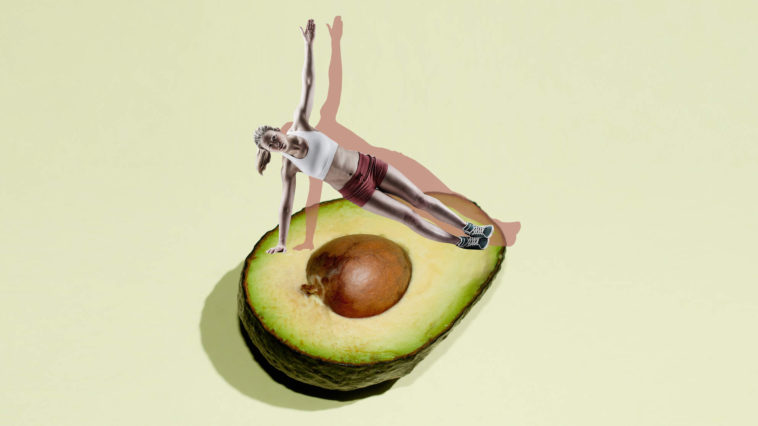
The low-carb, high-fat ketogenic diet continues to be the trendiest weight-loss plan around. Maybe that's because following keto is relatively simple: by cutting way back on your carbohydrate intake while eating lots of fat and a moderate amount of protein, your body goes into a state of ketosis, burning fat instead of carbs for energy.
Stories of keto diet weight-loss success are all over social media. Yet the plan isn't without some side effects, especially when it comes to the way it can affect your workout. Here are four must-knows if you’re an athlete or regular exerciser who’s gone keto—or is thinking of trying it.
You might feel weak during the first few weeks
Transitioning from burning carbs to burning fat takes about two weeks, so at the diet’s start, your system is not in ketosis yet. “That means that your body is still using stored glucose for fuel rather than ketones," says Jim White RDN, ACSM exercise physiologist, and owner of Jim White Fitness and Nutrition Studios in Virginia. "But because your carbohydrate intake is restricted, the amount of stored glucose (or energy) is limited, which can cause you to feel weak and fatigued.”
Some people experience symptoms such as brain fog, headaches, chills, and a sore throat during this transition. These symptoms are collectively referred to as “the keto flu," explains Dave Asprey, founder and CEO of performance nutrition company Bulletproof. It's not really the flu, of course. But symptoms like these will make you feel like a flu sufferer and “will negatively affect your ability to tackle a workout,” says Asprey.
The "keto poops" could interrupt your workout
Yep, this is a real thing. It's also known as keto diarrhea, and it can strike in the middle of a gym session. Keto poops are a common side effect of the high-fat diet. “This is likely due to the gallbladder—the organ that produces bile to help break down all the fat in the keto diet—feeling overwhelmed or overworked,” says Josh Axe, a natural medicine physician and author of the upcoming book Keto Diet.
Feeling an urgent need to go number two during yoga or CrossFit isn't too much of an issue; you can just hightail it to the gym restroom or locker room and then resume your workout. But when you’re on an outdoor run, well, that could be a problem. If you’re a casual runner, just pick a shorter route or one with known bathroom stops. And consider adjusting your meal schedule, so any poop problems happen before or after you lace up your running shoes.
You'll need to hydrate a lot more often
Dehydration is another common side side effect of keto. “Ketosis causes you to lose electrolytes because it increases urine output," says Axe. (That’s one of the reasons people lose pounds so quickly on the plan; it's water weight at first.) Also, because many fruits are high in carbs and you have to dial back your carb intake on the keto diet, you probably won't be consuming as much fruit as usual. Fruits have a high water content, so without them, you might be more dehydrated.
Thirst during a workout is your first clue that you need a water bottle break. But you might also notice an increase in fatigue and cramping as you get more into your routine. These are also signs of dehydration, and if you sense them, it's important to rehydrate ASAP. “If you’re dehydrated and fatigued, you’ll either feel less motivated to work out, or your workouts will feel crappy,” says Axe.
You might consume fewer calories—and have less energy
The keto diet is high in fat, and fat tends to be more filling than protein or carbohydrates. If you're feeling full, you could end up not having the proper amount of energy needed to power through a tough workout. “If you’re not eating enough calories, you could send your body into starvation mode, which would make you feel even more fatigued,” says Will Cole, functional medicine practitioner and author of Ketotarian.
You don't want to force yourself to eat when you're not hungry. But if you stash some workout snacks in your gym bag, you'll always have a keto-friendly source of energy to turn to if you need it. “Some of my favorite fatty pre-workout snacks are single serving packets of nut butters, avocados with a little sea salt and pepper, seeds, and grass-fed meat,” says Cole.
To get our top stories delivered to your inbox, sign up for the Healthy Living newsletter



